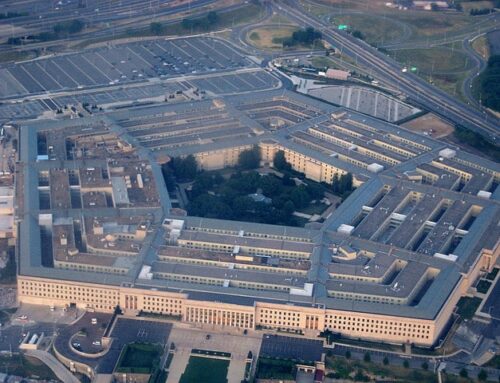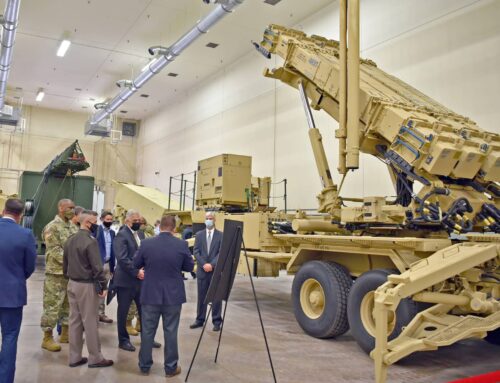The scent of defense acquisition reform is heavy in the air again. Just don’t call it acquisition reform.
The Defense Department issued a memo yesterday detailing how it plans to squeeze savings from the contracting process. DOD’s acquisition chief Ashton Carter said the initiative differs from acquisition reform in that it focuses on executing programs rather than budgeting for them.
But at it's heart the initiative still concerns the way DOD buys goods and services. DOD spends $400 billion annually on contracts, and that’s where Carter is looking for savings. The idea is to keep the money going to soldiers in the field growing by 2-3 percent each year by shaving an equivalent amount from inefficient contracting processes. Suggestions for how to accomplish this range from longstanding objectives like increasing the number of contract managers and fixed-price contracts to more provocative ideas like letting costs shape requirements on complex weapons such as the SSBN nuclear missile submarine. The initiative does look at “outcomes” by involving industry more directly—rewarding good performers with “special benefits,” for example.
One need look no further than the FY2010 defense authorization bills to see how closely these ideas track with Congressional reforms. Defense authorization is the annual repository of Congresses’ deep thoughts on acquisition reform, and there are plenty of them in the House and Senate versions of the bills awaiting passage. For example, Senate provisions would:
-
Clarify the distinction between cost estimates developed for “baseline descriptions” and those developed for contract negotiations. This amends a section of the Weapon Systems Acquisition Reform Act passed last year that attempted to stop DOD’s reliance on “unrealistic and overoptimistic” cost estimates. The new memo also recommended that DOD use “will-cost” estimates to inform “should-cost” estimates, i.e. use independent cost estimates to keep program costs from spiraling.
-
Update how DOD addresses urgent operational needs. A 2010 Government Accountability Office report said the current process is outdated and the military in some cases had “stretched the boundaries of rapid acquisition authorities to undertake large and complex acquisition programs.” These programs—such as modifications to the KC-130J tanker—are better suited to traditional contracting processes because of their “high development risk” and danger of becoming “redundant or duplicative”–another problem pointed out in the memo.
-
Compel a Defense Science Board review of contractor logistics support for contingency operations. Observing that the military relies on logistics contractors to “an unprecedented degree” in Iraq and Afghanistan, the committee said that although these contracts have saved DOD money in some cases, questions regarding oversight and inherently governmental functions remain. The GAO released a report this week stating that while the number of contractors in Afghanistan now outnumber soldiers, DOD still isn’t adequately overseeing or tracking them.
- Allow DOD to make determinations of fault in cases where contractors jeopardize the health of soldiers. The provision would amend a section of last year’s law allowing DOD to withhold award fees from such contractors—a section added in response to a soldier’s electrocution in Iraq. U.S. courts cannot currently make a determination of fault, either because they lack jurisdiction or because the contractor has immunity from civil actions.
-
Expand rapid acquisition capabilities for combat needs, allowing DOD to double the value of supplies acquired from $100 to $200 million (the Senate echoed this provision).
-
Designate the Joint Strike Fighter alternate engine a major subprogram, making it more accountable to acquisition laws including the Nunn-McCurdy statute (also backed by Senate). This means that if either engine program exceeds 25 of its baseline costs, DOD must either cut it or make the case that it’s crucial to national security. DOD will be reassessing the whole JSF program because of a Nunn-McCurdy breach earlier this year, so the engines could be reevaluated in that process.
-
Fully implement a database that would track contractors in Iraq and Afghanistan. DOD, the State Department and USAID have resisted, complaining that including local subcontractors in the database could make them vulnerable to attack. The legislation would also require a report from the agencies updating Congress on the status of contractors in those countries and detailing plans for strengthening interagency coordination on contracting.
- Review its use of national security exemptions to the Competition in Contracting Act. The Act was created five years ago to compel full and open competition in defense contracting. The review would track how and why exemptions were claimed to date and include draft regulations on the exemptions.
The defense authorization bill needs approval from the full Senate before it goes to conference after the July 4 recess. And the DOD directive? “it has taken years for excessive costs and unproductive overhead to creep into our business processes, and it will take years to work them out,” warns Carter.
For more information, contact Laura Peterson laura[at]taxpayer.net











Get Social